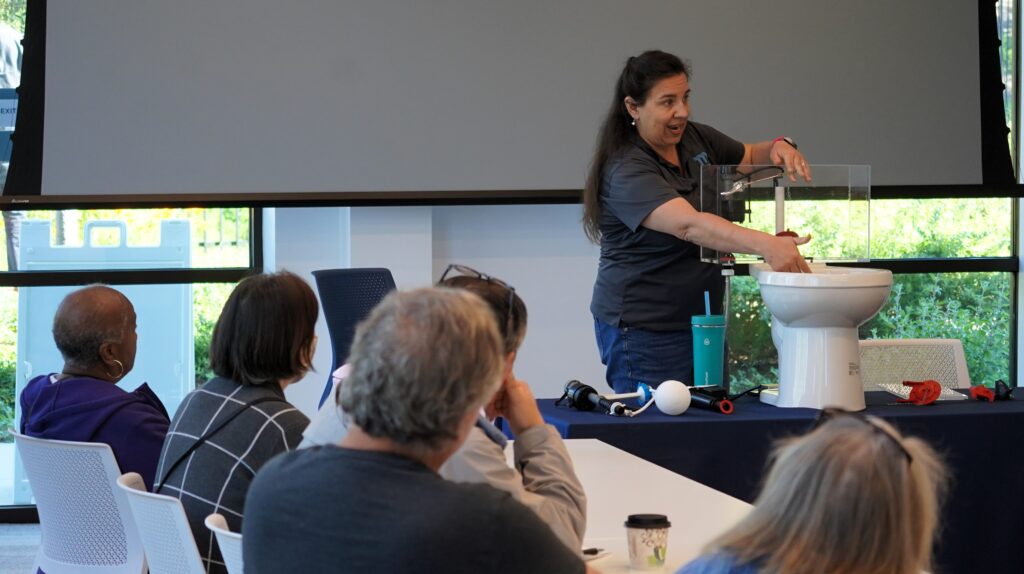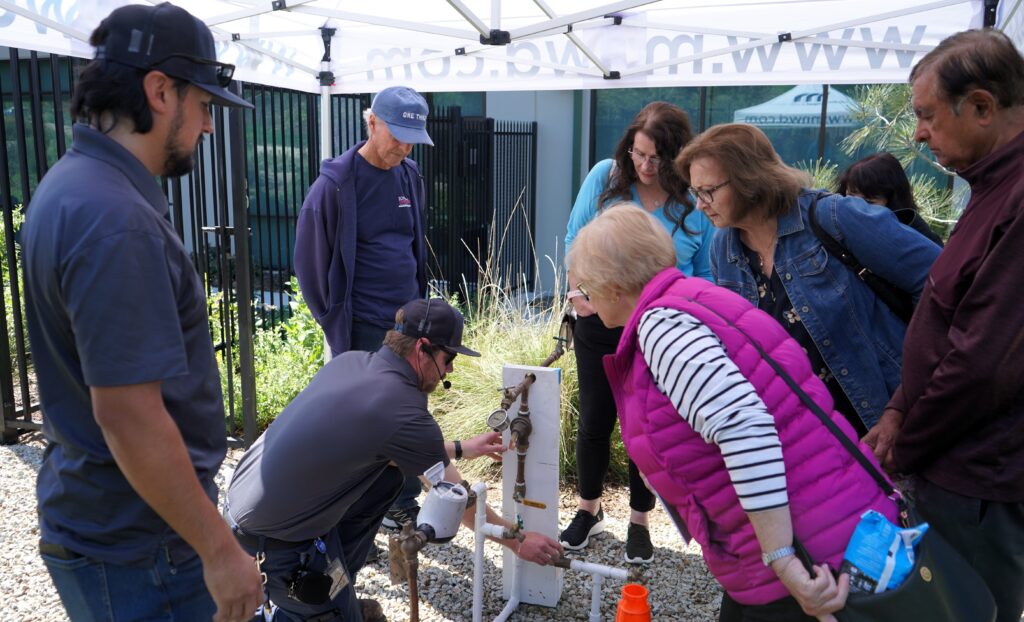Moulton Niguel Water District is helping its customers get the upper hand in the battle against costly water leaks around the home.
This spring, dozens of South Orange County residents turned out for the District’s 2025 Fix-a-Leak Week workshops. At the complimentary events, Moulton Niguel staff helped customers identify and repair common leaks around the home, including leaking toilets and broken sprinklers.
“I came as both a customer and a Board Member,” said Moulton Niguel Vice President Diane Rifkin. “It’s great to hear from our customers that they find it very helpful and interesting.”
Staff also helped customers enroll in the District’s complimentary online customer portal, MyWater MNWD, where customers can view their water usage data, sign up for leak alerts, and pay their water bill.

Household Leaks: Expensive Way to Waste Water
Household leaks waste as much as 1 trillion gallons of water every year nationwide, according to the U.S. Environmental Protection Agency. Moulton Niguel, an EPA WaterSense Partner, organized its complimentary workshops in conjunction with the EPA’s National Fix-a-Leak Week campaign.
“I enjoyed seeing the very positive response from the community,” said Moulton Niguel Director Donald R. Froelich. “The small groups allowed for a lot of questions, and it was nice to have the time to fully address their concerns.”
Around the home, the most common leaks are worn toilet flappers, dripping faucets, damaged sprinklers, and broken pipes. Common leaks can go on for months without being notice, wasting thousands of gallons of water and hundreds of dollars. Just one leaky toilet can cost as much as $500 in wasted water.
“My favorite part was finding out that the most common leak is in the toilet and how to fix it,” shared Linda Jeffcoat, who attended the workshop with her husband, Craig.
Household leaks are often easily repaired without the help of a professional.
“Like most people here, I don’t have plumbing experience, but this class made things easy to understand and tackling household leaks less intimidating,” explains Chan Nou, a Moulton Niguel customer, who lives in Mission Viejo. “I just wish I had attended one of your classes sooner!”

Don’t Miss Out on Moulton Niguel’s Programs & Services
Beginning in April, Moulton Niguel mailed complimentary toilet leak test kits to every customer. The blue dye strip test can be easily dropped into your toilet’s water tank. After a few minutes, if any blue dye makes its way into the bowl, it’s a sign that you likely have a leak.
In addition to Fix-a-Leak Week workshops, the District also holds workshops throughout the year that help customers implement water-wise landscaping and irrigation practices.
“The information provided was very understandable,” said Moulton Niguel customer David Kim. “I’m really glad I came.”
Tackling Tough Toilet Leaks
Toilet Leaks are the most frequent type of leak at a residential property.
- Leaking Flapper: A misaligned or warped flapper that is not creating a seal between the toilet tank and bowl is the most common toilet leak. Drop a toilet dye strip in the toilet tank so that it will turn the water blue. Wait 15 minutes (Do NOT flush your toilet!) and check for dye in the toilet bowl. If the water in the toilet bowl turns blue, then the flapper is not creating a seal between the tank and the bowl. Fortunately, replacement flappers can be purchased at home improvement stores for usually $15 or less. We have an instructional video that shows you how to replace them yourself.
- Leaking Fill Valve: The porcelain tank lid can mask the sound of a slowly running fill valve, so lift the tank lid and look and listen for water movement. Check the adjustment screw on the fill valve to ensure optimum water level per your toilet manufacturer’s recommendation, typically at ¾” below the top of the overflow tube.
- Loose Handle: If the toilet handle feels loose, the nut inside the tank might be loose and or broken.
- Running Toilet: Jiggling the handle? If so, the chain, flush lever, or handle could be sticking and causing the toilet to run.